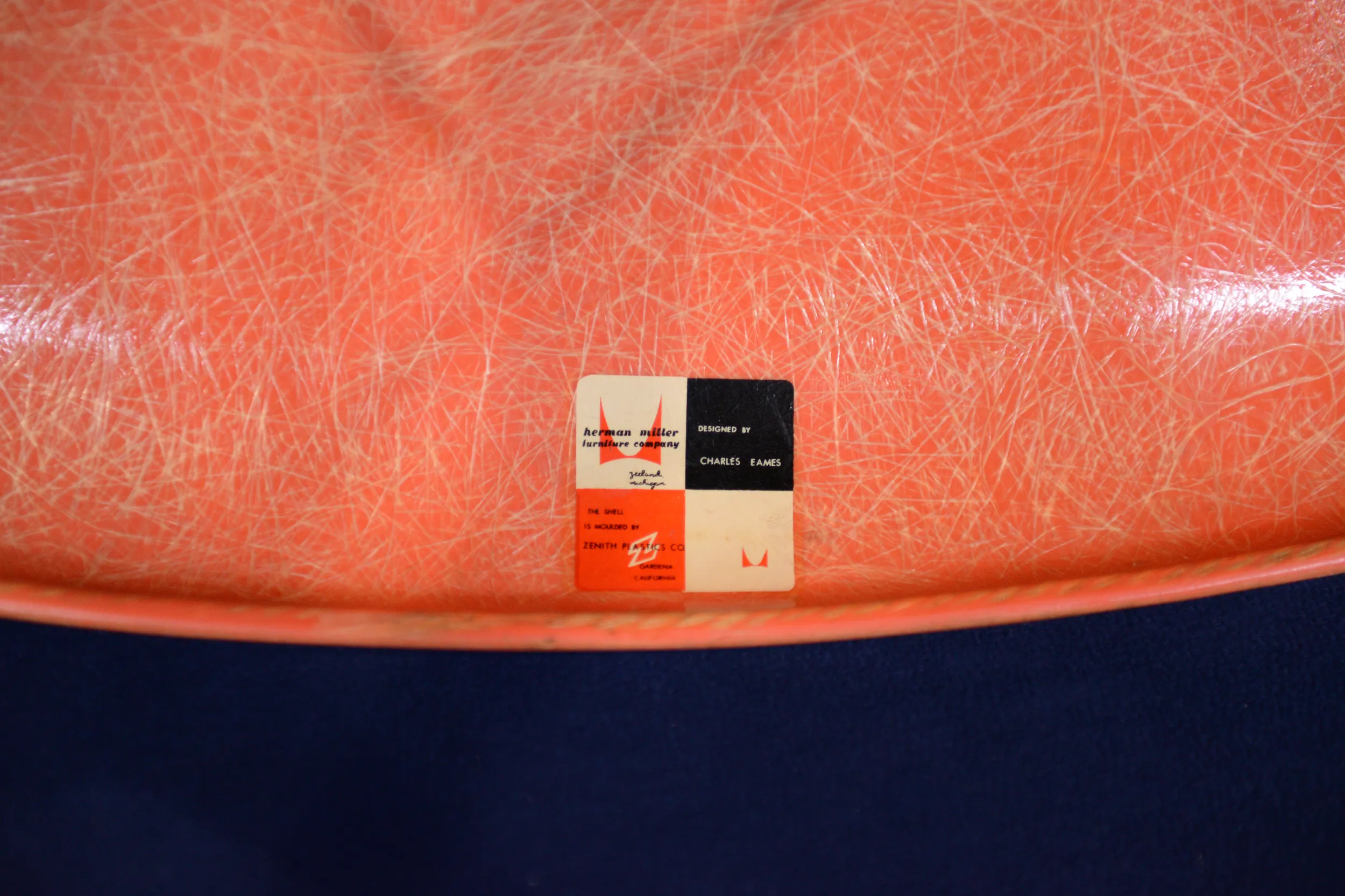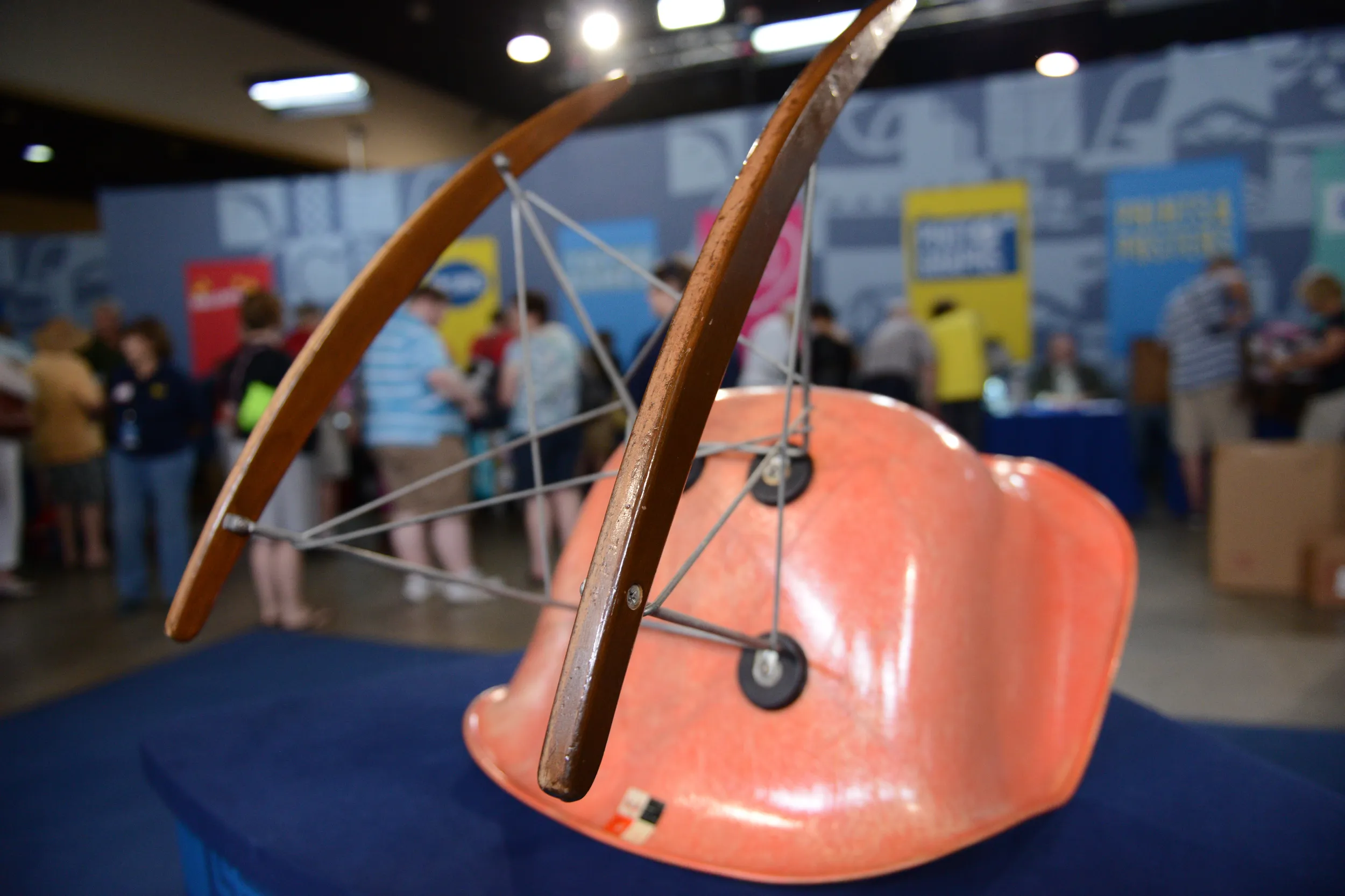GUEST: It's been in the house in our family as long as I can remember. My dad was an architect, so we're pretty sure he bought it early on. And I was the oldest, so I think I got first dibs on it.
APPRAISER: The chair is really exciting. It was designed by Charles and Ray Eames, a fantastic design duo of the 20th century. The postwar American period has become known as mid-century modern. And this chair more than anything else embodies that entire period. Herman Miller, the company that produced these, probably made hundreds of thousands of these chairs in various combinations. The top is a molded fiberglass shell, and this shell was interchangeable with different bases. And one of the rarest versions of those bases is the rocking chair base.
GUEST: Oh.
APPRAISER: It was originally conceived as a chair that could be used indoors or outdoors, and it very quickly became used by mothers and expecting mothers. About 20 years after the production started, it became really known as a nursing rocking chair, and Herman Miller stopped selling them and only started giving them away to expecting mothers that were working at Herman Miller.
GUEST: Oh, wow.
APPRAISER: Charles Eames was a great designer but he was even a better redesigner. There are some designers who would design something and leave it alone. Charles Eames never left well enough alone. He had to get back in there and change it. I'll show you some of the elements here. These rubber shock mounts were designed to have the seat and the base have a little bit more give when you sat in it. They've kind of turned rock hard over the years. Within a short period of time, those were redesigned smaller because they realized they didn't need so much surface area. The shell itself was originally designed with a rope embedded into the edge, and you can see the rope showing through the fiberglass side. The wood rockers were redesigned to be a little bit beefier to take a little bit more stress. So the next version was a little bit squarer and a little bit taller. But of all the pieces, the most interesting piece that was redesigned is this metal base. The metal base, which was designed in conjunction with the engineering department at UCLA in Los Angeles…
GUEST: Wow.
APPRAISER: …is really a design study of doing the most with the least. So it has this wonderful X-frame structure that gives it all of this engineering strength. These particular wires here that cross right in the middle of the chair, when you rock back and you put your ankles underneath and when you rock forward, it can hurt your ankles. I've seen thousands of these, and I've only seen three with this cross that's crossing right here. Because within months, they redesigned it where this cross actually crossed farther up here, next to the stretcher. The chair was designed between 1948 and 1950, and it was released in June of 1950. By October of 1950, they announced that they were now selling it in colors because they were infusing color into the shell. So we know that this chair was produced after October of 1950. Have you ever had any work done to the chair or has the family ever had any work done to the chair?
GUEST: There was one of the struts that I think was loose and my brother had contacted a friend who was a welder, but said, "Be very careful." And then he said after it got done, he was not even sure which one it was. He thought he did a good job.
APPRAISER: He did a very good job, but he didn't do a good enough job to fool me.
GUEST: Oh.
APPRAISER: I can tell you exactly which weld it is. It's actually this weld right here.
GUEST: Okay.
APPRAISER: You can see tiny little welding solder marks. And you can't see those anywhere else because all of these others were done with a slightly different technique. Also, at some point, these runners have been refinished. This has a dark stain on it that was not factory original. Over the years, the bottom has worn down and you can see that this is the color that these wood elements should be. So because of that one little tiny weld, even though it was done very sensitively, and because of the finish, it puts it in a category of a lower price range. However, it's still pretty impressive for a mass-produced chair. Do you have any idea what it might be worth?
GUEST: Maybe $1,000, $1,200? I don't know.
APPRAISER: Now, this is not in great condition, but it is rare. Even in this condition, I would put the value of this example at $1,500 at auction.
GUEST: Okay.
APPRAISER: Now, if it had the original finish and it had survived without being rewelded, conservatively, I would say $3,000 to $4,000 for an example that really proves to us that this was essentially a first edition. I just love this example. I just want to hug it.
(laughs)
GUEST: Wait, let me get my camera.













